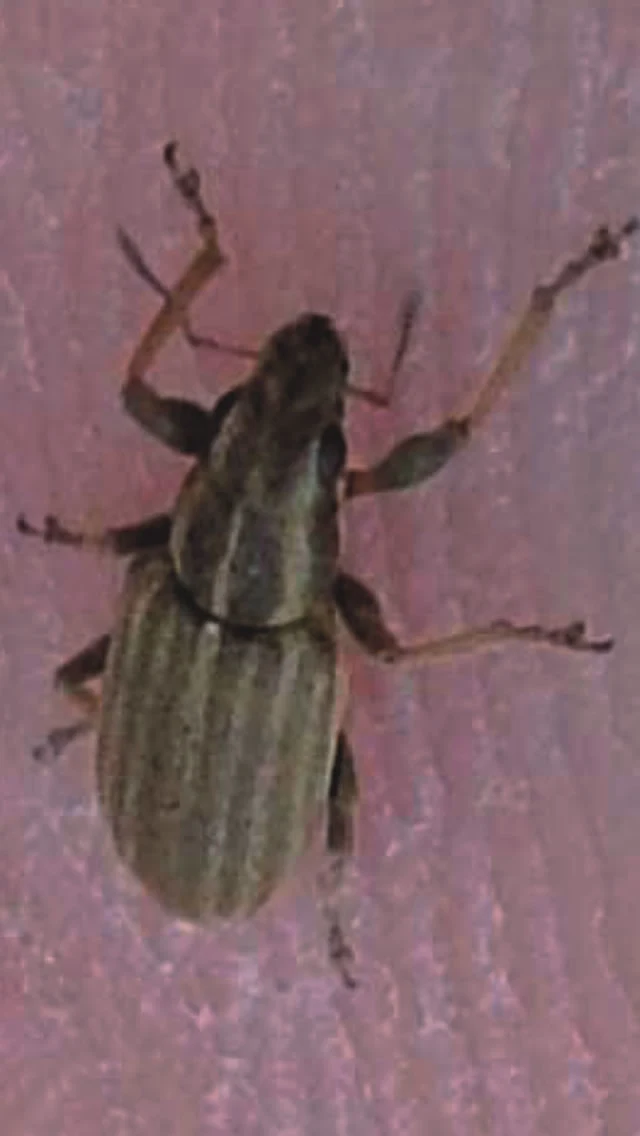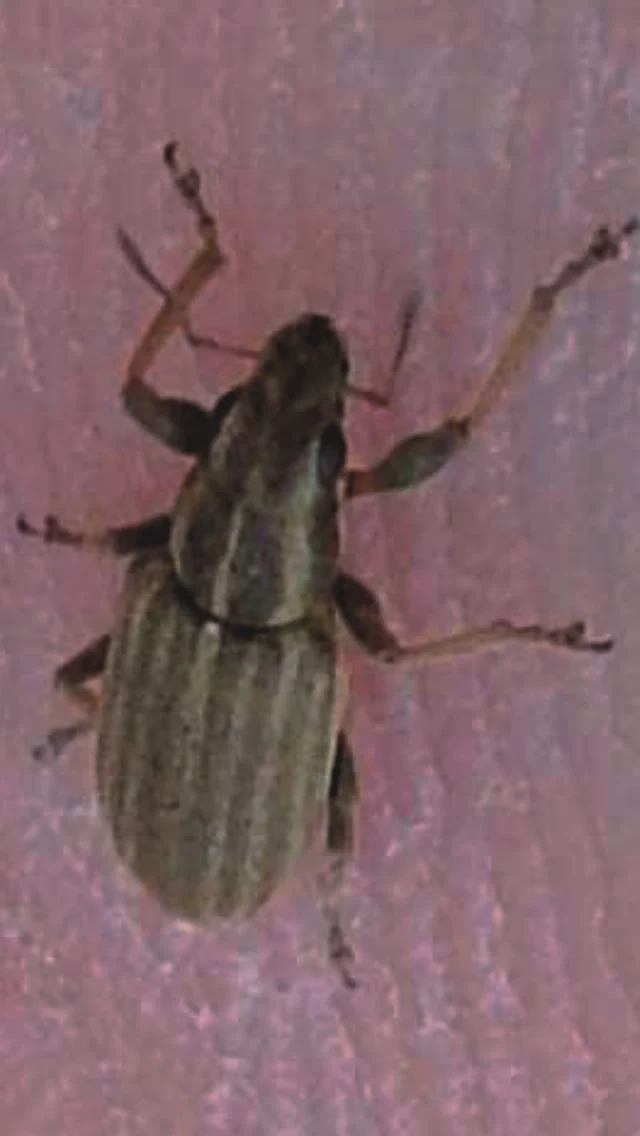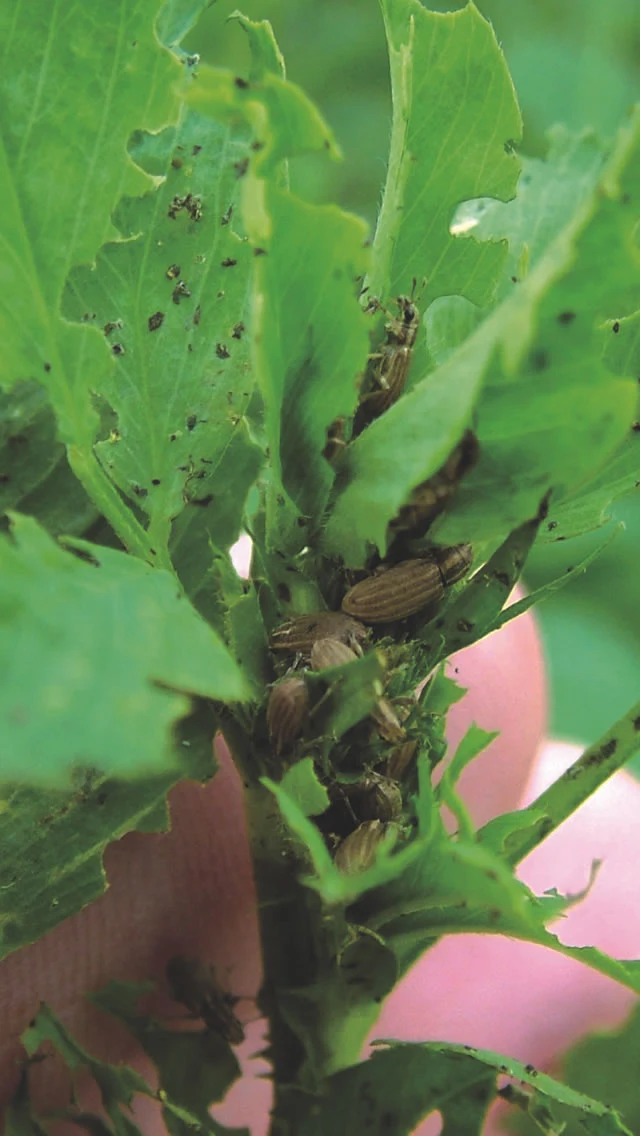
Pea and Bean Weevil
Sitona lineatus
Identification
The adult weevils are grey/brown in colour, with stripes along the thorax and abdomen, and are up to 5 mm long. The larvae are white with a brown/yellowish head, up to 6 mm long and with no legs.
Symptoms
The adults cut characteristic ‘U’ shaped notches into the young developing leaves. Greater damage is done by the larvae feeding below ground on the nitrogen fixing nodules on the roots.
Life-cycle
In suitable temperatures in the early spring, the adults migrate from adjacent crops or overwintering sites and feed on the developing crop leaves. Eggs are laid in the soil and the emerging larvae feed on the nodules for 3-4 weeks before pupating. Adults emerge in mid-summer and feed on host plant leaves before moving to hibernation sites in the autumn. There is 1 generation per year.
Importance
Spring beans and combining peas are more at risk of economic damage than winter beans which tend to be sufficiently advanced by the time the weevils are active to withstand feeding damage. Yield losses to spring sown crops can be significant although more usually crops are able to withstand and compensate for damage caused by early feeding. However it has been estimated that in exceptional cases yield losses of up to 25 % can occur where attacks are severe.
Threshold
None established.

Adult pea and bean weevil

Pea and bean weevil infestation

Feeding damage showing characteristic leaf notching


